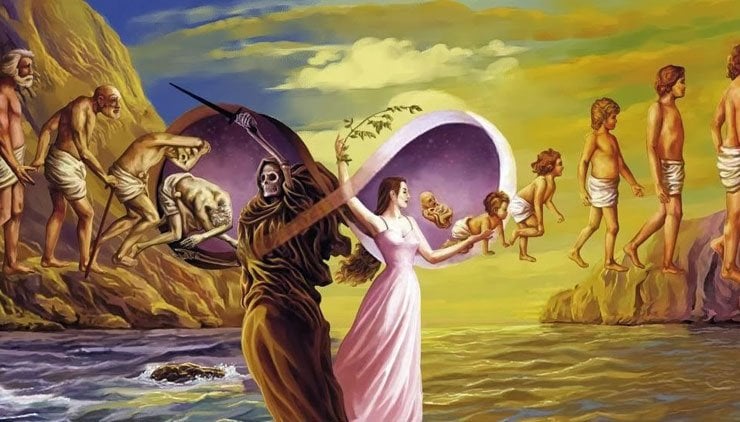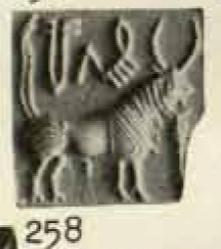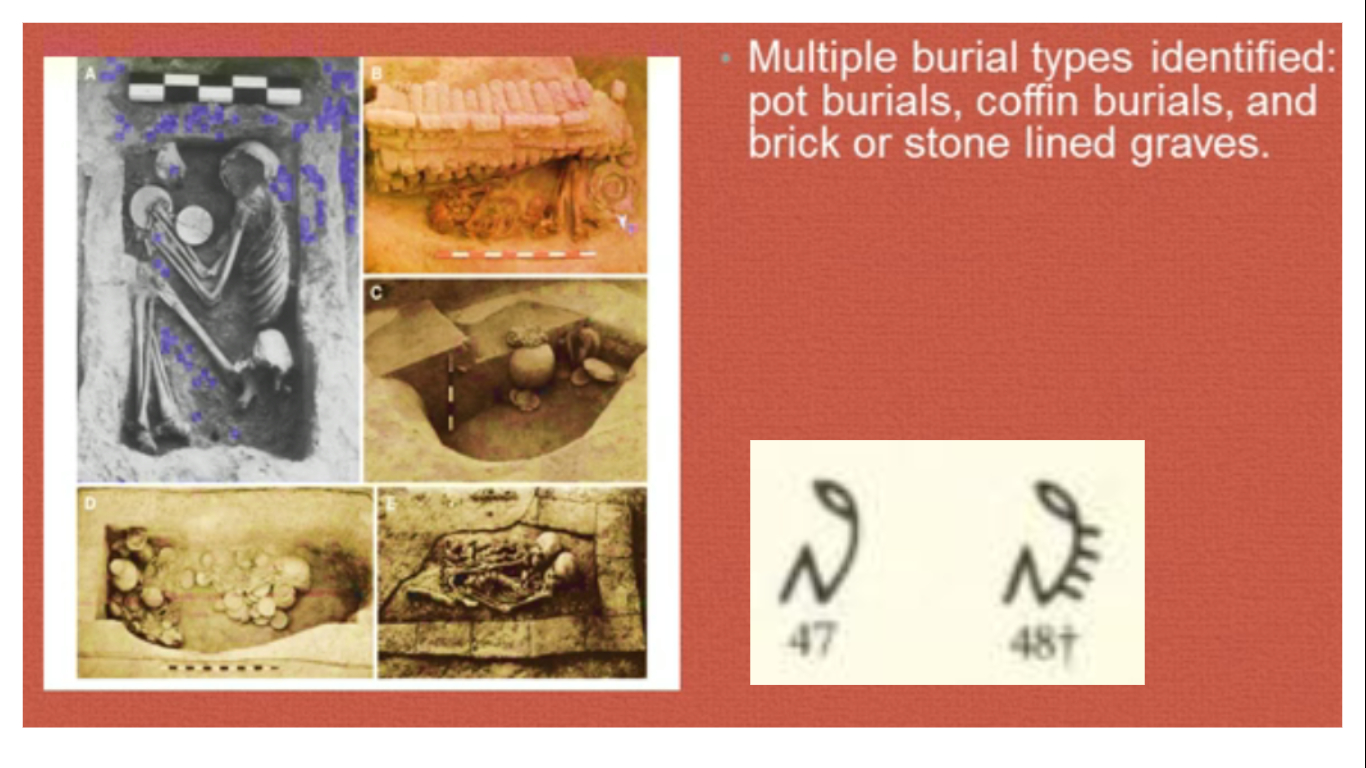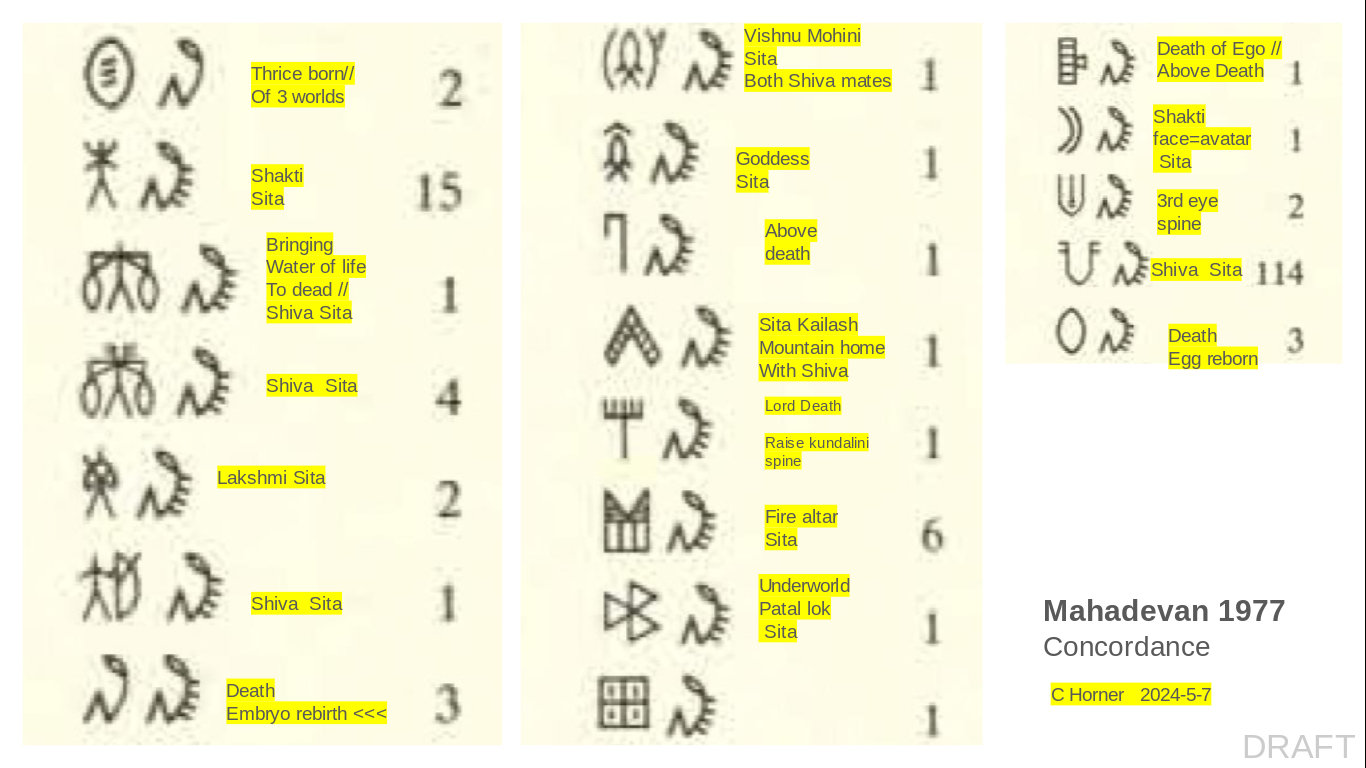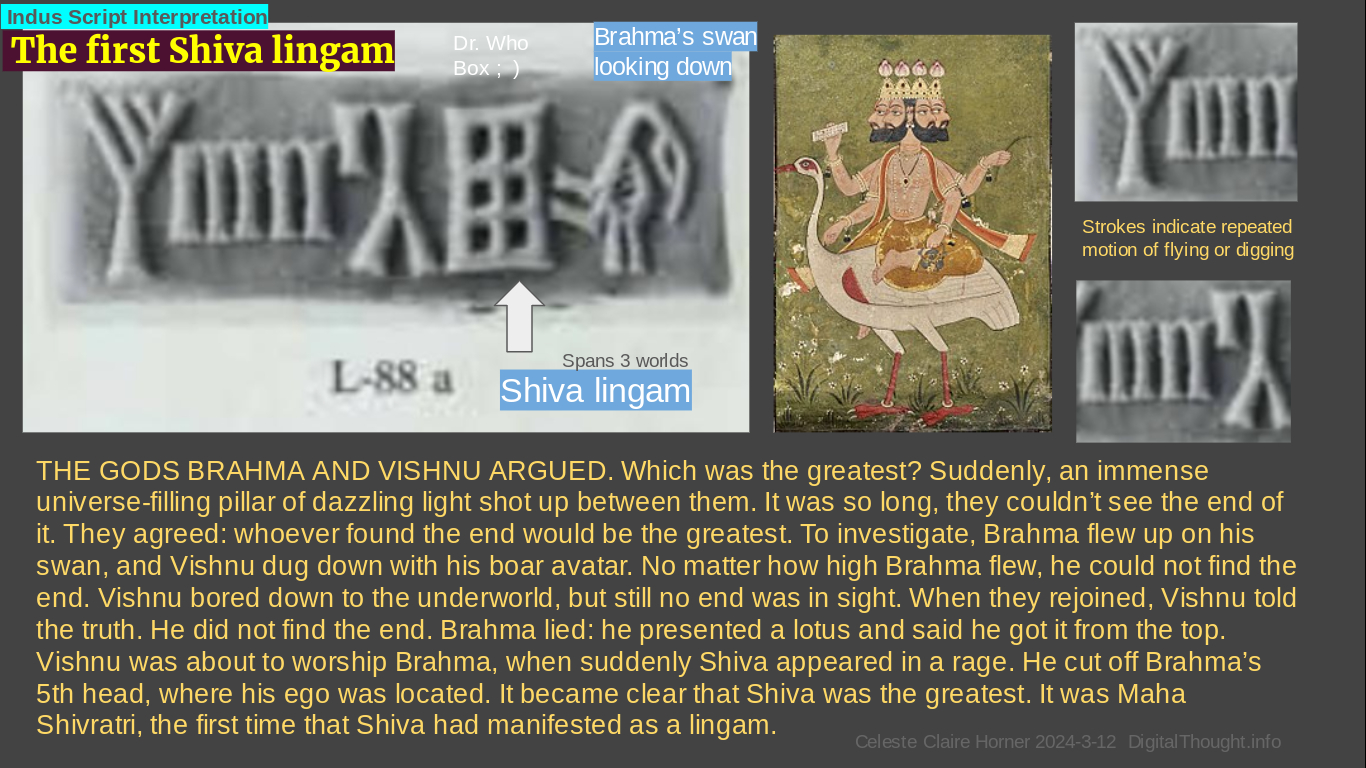|
Indus Script deciphered with Hindu mythology: glyph #48, the corpse
|
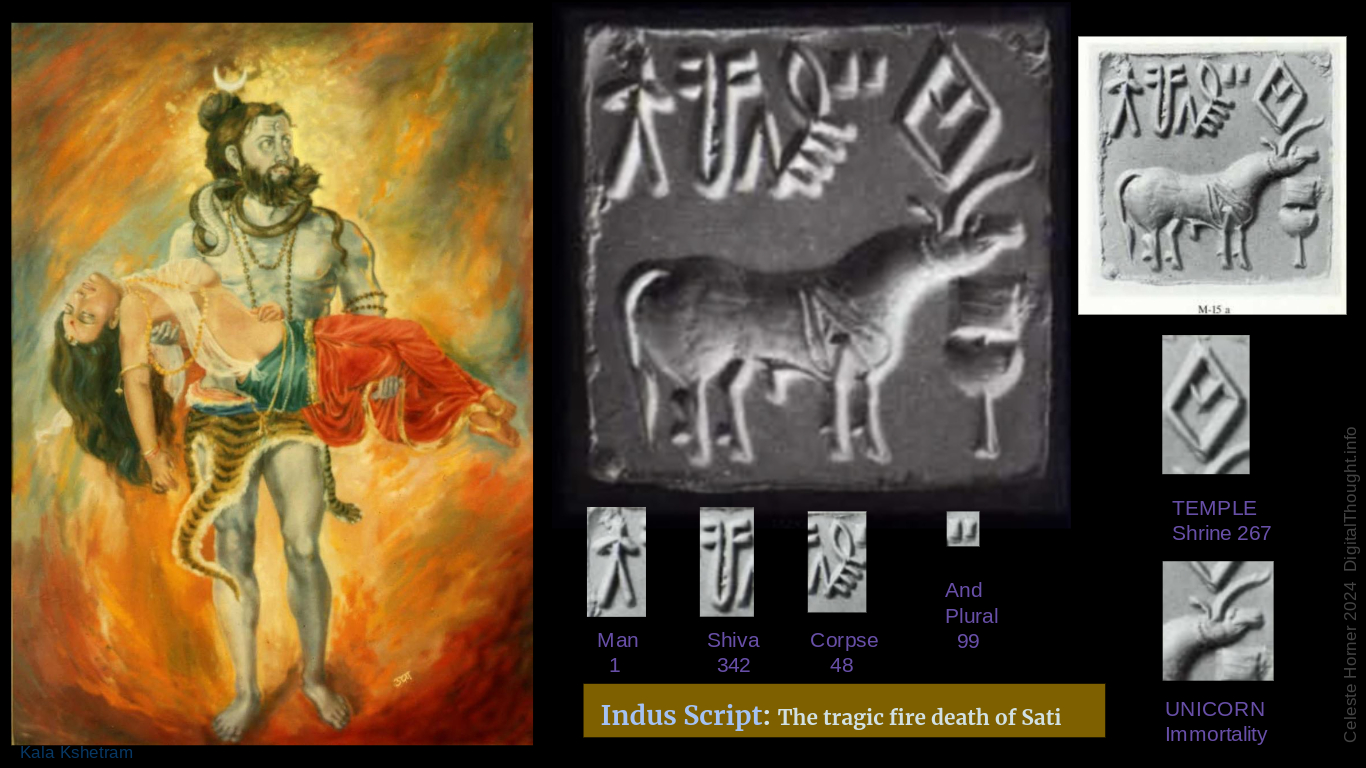 |
|
Figure 1. Indus Script glyphs deciphered by Celeste Horner 2024. Shiva art by Kala Kshetram @Tumbler
Indus Seal M-15 refers to the Hindu shrines dedicated to Sati, the first wife of the god Shiva. She sacrificed herself in fire because her father, a king, disrespected her husband. Indus Script glyph #48 depicts a corpse, with vertebral spines protruding from the back. In this story, these strokes also suggest robes, funeral wrapping, and flames. Glyph #48 also appears Ardhanishwara legend of the three-legged skeleton man, to describe Shiva as a god of the dead, and to represent the noose, called pashu with which the death god Yam extracts souls from their bodies at the end of life. The name of Shiva as Pashupati, Lord of Animals, may be written with glyph #48.
Indus Script glyph #48. SATI DIED TRAGICALLY. She married Shiva, God of Destruction against the wishes of her father, a king. He did not want his beautiful princess daughter to marry a poor, matted-hair ascetic who was covered with crematorium ash and writhing snakes. To show his contempt, the king hosted an elaborate sacrificial banquet and invited all the gods of the universe, except Shiva. Sati went to the event, dispite not being invited. When she appeared, her own father mocked her husband, and humiliated her. In protest, unwaveringly loyal to her husband Shiva, Sati walked into the sacrificial fire and died. Shiva arrived in a consuming rage and destroyed the entire place. After that, he staggered around the land like a mindless drunken man, agonizing in bottomless grief, carrying the body of his dead wife. He was oblivious that parts of her corpse fell to the ground. His trail of tears became a pilgrimmage route in India to this day. Each part of Sati's body that fell has a Shakti peeta shrine and letter of the Sanskrit alphabet dedicated it, so that her memory will never die. Finally Shiva's grief gave way to anger, and he started the fatal steps of his Tandava dance that had the power to destroy the universe. At that point, Vishnu, the God of Preservation intervened. He attacked Shiva with his whirling sawtooth Sudarshan chakra, one of the ultimate weapons of the gods. It vaporized the remaining crumbs of Sati's corpse, and knocked the destructive winds out of Shiva. His mind restored, Shiva walked into a forest, sat down, and meditated motionless -- for centuries.
|
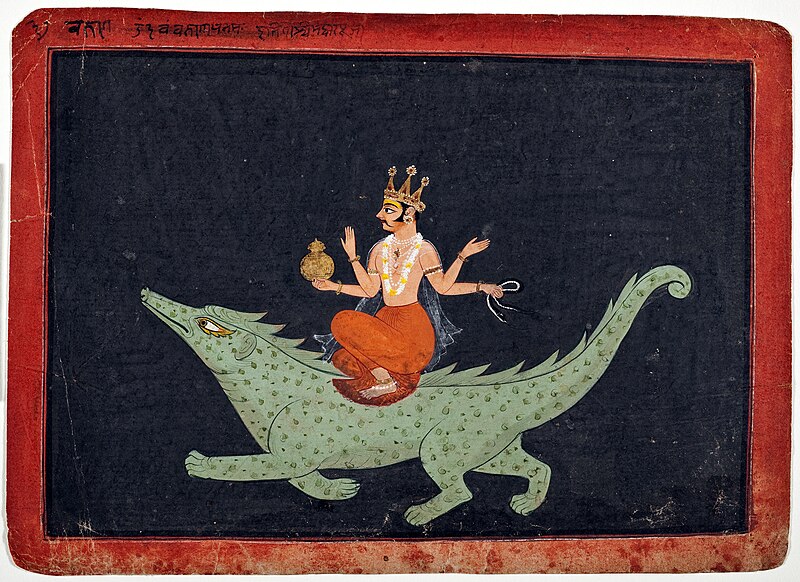
Varuna rides a Makara and holds a pasha noose (glyph #48)
Image credits: Metropolitain Museum and Indianholiday.com. The Indus Script: text, concordance, and tables. Mahadevan, I (1977)
|
Indus Script glyph #2. @ How Brahma lost his fifth head. A dispute arose between gods Brahma and Vishnu over who was the greatest. Suddenly, an enormous pillar of light and fire blazed up between them. They agreed that whoever could discover the end would be declared superior. Brahma transformed into a swan and flew upwards. Vishnu in the form of his boar avatar dug down towards the netherworld. Both gods searched, but neither could find the end of the pillar. When they met again, Vishnu admitted truthfully that he failed to find the bottom. Brahma, however, lied and produced a flower that he said came from the top. Just as Vishnu was about to bow to him, the god Shiva emerged from the pillar in a rage, and sliced off the 5th head of Brahma which had swollen his ego and caused him to lie. After that is was apparent that Shiva was the supreme deity. Jyotirlinga (radiant linga) shrines across India honor this first manifestation of Shiva as a cosmic pillar of light.
Concordance Entries for glyph #48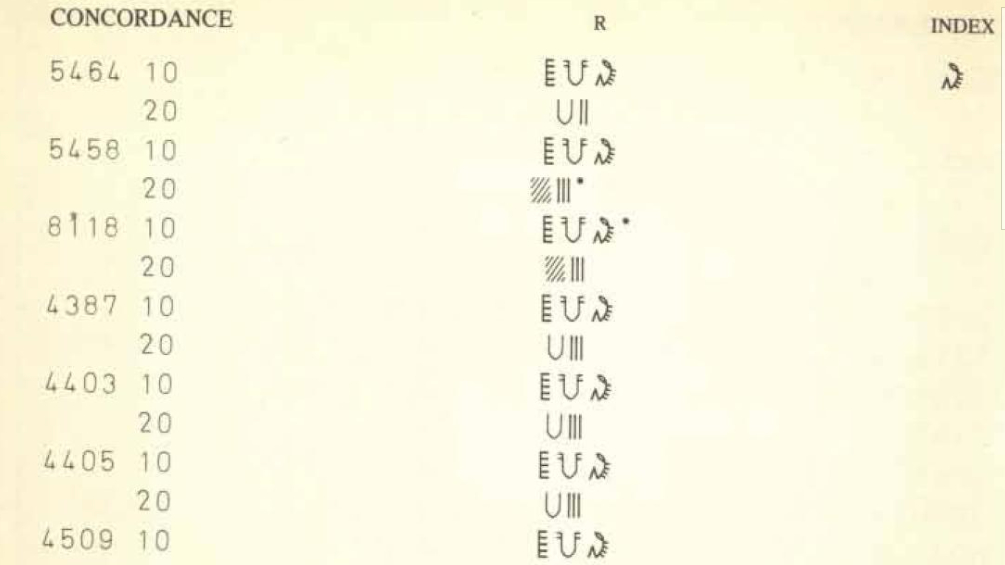
Glyph #48: corpse, spine. Endless - Shiva - Spine. Shiva is the infinite axis of the cosmos
Hindu mythology interpretation of the Indus ScriptCeleste Claire Horner 2024
Glyph 171. Represents Ocean of Milk, or lord of the Oceans. 5-prong trident. Also appears as Neptune's 5-prong trident sceptre in Ephesus house. Alamy. 8059: Ψ Trishul. Jyotirlinga I. ||| Tri Murti, TRi. TRIMURTI.
|

